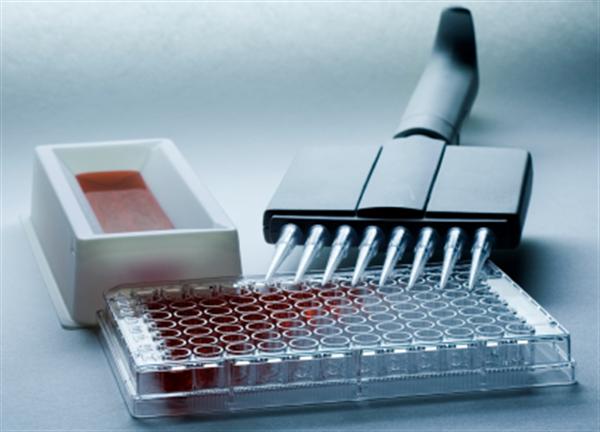According to Shanghai Jinma's analysis, the ELISA kit combines the specific reaction between antigens and antibodies with the high-efficiency catalytic action of enzymes on substrates. The antigen-antibody reaction takes place in a solid-phase carrier, specifically a polystyrene microtiter plate. After each reagent is added, any unbound excess reactants can be removed through washing, ensuring the accuracy and reliability of the results. In practical applications, there are several commonly used methods based on different design approaches. These include: the indirect method for detecting antibodies (Panel A), the double antibody sandwich method for detecting antigens (Panel B), and the competitive method for detecting small molecule antigens or haptens.
Based on years of research experience from Shanghai Jinma Biological, we recommend using the double antibody sandwich method and the indirect method for ELISA kits. Below are six key steps in the testing process, which you can follow for accurate and reliable results:
- Capture Antibody Coating: Dilute the primary antibody to a concentration of 1–10 μg/ml in 0.05 M carbonate coating buffer (pH 9.6). Add 0.1 ml per well in a polystyrene plate and incubate overnight at 4°C. The next day, discard the solution and wash the wells three times with washing buffer (3 minutes each time).
- Sample Addition: Add 0.1 ml of the diluted sample to the coated wells and incubate at 37°C for 1 hour. Include blank, negative, and positive control wells during this step.
- Add Enzyme-Labeled Antibody: Add 0.1 ml of freshly prepared enzyme-labeled antibody (diluted according to titration) to each well. Incubate at 37°C for 0.5 to 1 hour, then wash again.
- Substrate Addition: Add 0.1 ml of TMB substrate solution to each well and incubate at 37°C for 10–30 minutes to develop color.
- Stop the Reaction: Add 0.05 ml of 2M sulfuric acid to each well to terminate the reaction.
- Result Interpretation: Observe the color change visually against a white background. A darker color indicates a stronger positive result, while a light or no color suggests a negative result. You can also measure the OD value at 450 nm (or 410 nm if using ABTS) using an ELISA reader. If the OD value exceeds 2.1 times that of the negative control, it is considered positive.
We are committed to providing our customers with high-quality products and expert technical support. With extensive experience, top-notch quality, sufficient inventory, and timely delivery, we ensure that every customer receives the best service possible. Our ELISA kits are available at highly competitive prices, with free technical guidance and testing services. Whether you're a new or returning client, feel free to contact us for more information. We look forward to serving you!

Electronic shelf labels (ESLs) are digital displays that are used in retail stores to replace traditional paper labels on shelves. These labels are capable of displaying product information such as prices, promotions, and other relevant details in real-time. ESLs are becoming increasingly popular in retail stores due to their many benefits, including increased efficiency, accuracy, and cost savings.
One of the key benefits of ESLs is their ability to improve efficiency in retail stores. With traditional paper labels, employees must manually change prices and other information on each label, which can be time-consuming and prone to errors. ESLs, on the other hand, can be updated remotely and in real-time, saving employees time and reducing the risk of errors. This allows employees to focus on other tasks, such as customer service, which can improve the overall shopping experience for customers.
Another benefit of ESLs is their ability to improve accuracy in pricing and inventory management. With traditional paper labels, pricing errors can occur, leading to customer dissatisfaction and lost sales. ESLs, however, can be programmed to update prices automatically and accurately, reducing the risk of pricing errors. Additionally, ESLs can be integrated with inventory management systems, allowing retailers to track inventory levels and make informed decisions about restocking products.
electronic shelf tags, ESL,digital price tag,electronic price tag,digital shelf tags,esl label,esl tags,electronic price label,e ink shelf label,e ink shelf tag
Guangdong Elieken Electronic Technology Co.,Ltd. , https://www.elieken.com
![<?echo $_SERVER['SERVER_NAME'];?>](/template/twentyseventeen/skin/images/header.jpg)